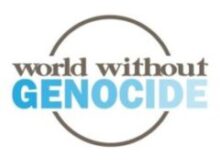Our ‘disappeareds’: Minnesota must examine issue of missing Indian women
A bill in the Minnesota Legislature this session will create a task force to examine the systemic nature of this problem in Minnesota and recommend steps for prevention.
By Ellen J. Kennedy
March 25, 2019
I went to Buenos Aires, Argentina, in January. It was lovely to escape from Minnesota to the Southern Hemisphere’s sunshine and long summer days. But it was chilling to be there.
I wanted to stand with the madres who march on the Plaza de Mayo every Thursday afternoon. The madres, or mothers, have been demonstrating on this public plaza in front of the Casa Rosada, the government house, every Thursday since 1977. EVERY THURSDAY. That’s 2,184 Thursdays over the past 42 years.
They were young when they began marching in 1977; many are now old, stooped, slow in their steps, and with resignation etched into their faces. Some have died. Some have been killed for their protest.
The ones who march hold pictures of sons, daughters, loved ones who were disappeared. Not ‘who disappeared,’ but who were disappeared, forcibly taken by the government during Argentina’s brutal military junta from 1976 to 1983.
Height of the Cold War
This was at the height of the U.S.-USSR Cold War, when Communism was spreading through South and Central America, Vietnam, Indonesia, East Timor, and promised economic reforms for minority groups and indigenous people and the breakup of powerful elite classes. Most significantly, it also meant the end of large American companies in these places with devastating consequences for the U.S. economy.
When pro-leftist forces arose in Argentina, that government, helped by the U.S., fought back against those suspected of left-wing activities, and 30,000 people were kidnapped, detained, tortured, executed, or taken on “death flights” and thrown alive into the Atlantic Ocean.
The mothers demanded to know what happened to their children. They began to march in the Plaza wearing white headscarves, symbolizing a child’s diaper, with their children’s names embroidered on the scarves.
They’re still marching because they still don’t know where their children are. They were disappeared, gone, in Spanish the “desaparecidos.” People come from all over the world to march in sympathy with the madres, who have been nominated for the Nobel Peace Prize – six times.
This story has echoes around the world, and right here.
Our desaparecidos
American Indian women are our desaparecidos. They are disappeared, they are murdered, they are gone. Nobody knows for sure how many are missing. We know it’s thousands, but in many places the criminal justice system isn’t tracking these cases, or the records are incomplete, or the cases are mislabeled, or the incidents never even get reported and filed.
The women are disappeared – and then they disappear forever, they become invisible, not even turning up in a database. Nobody has been marching with the mothers and fathers, grandparents, the sons and daughters left behind. People aren’t coming from around the world in sympathy and solidarity with these mourners. Nobody is nominating these searchers for the Nobel Peace Prize.
A bill in the Minnesota Legislature this session, HF 70/SF 515, will create a task force to examine the systemic nature of this problem in Minnesota and recommend steps for prevention.
It’s a first step. Think of all the steps the madres have walked in 42 years on that plaza, wearing those embroidered headscarves and holding those photos. We have a long way to go to end the disappearances and the invisibility of American Indian women.
Ellen J. Kennedy is the executive director of World Without Genocide and an adjunct professor at Mitchell Hamline School of Law in St. Paul.
In October 2021, Minnesota designated the second Monday of October as Indigenous Peoples Day.



